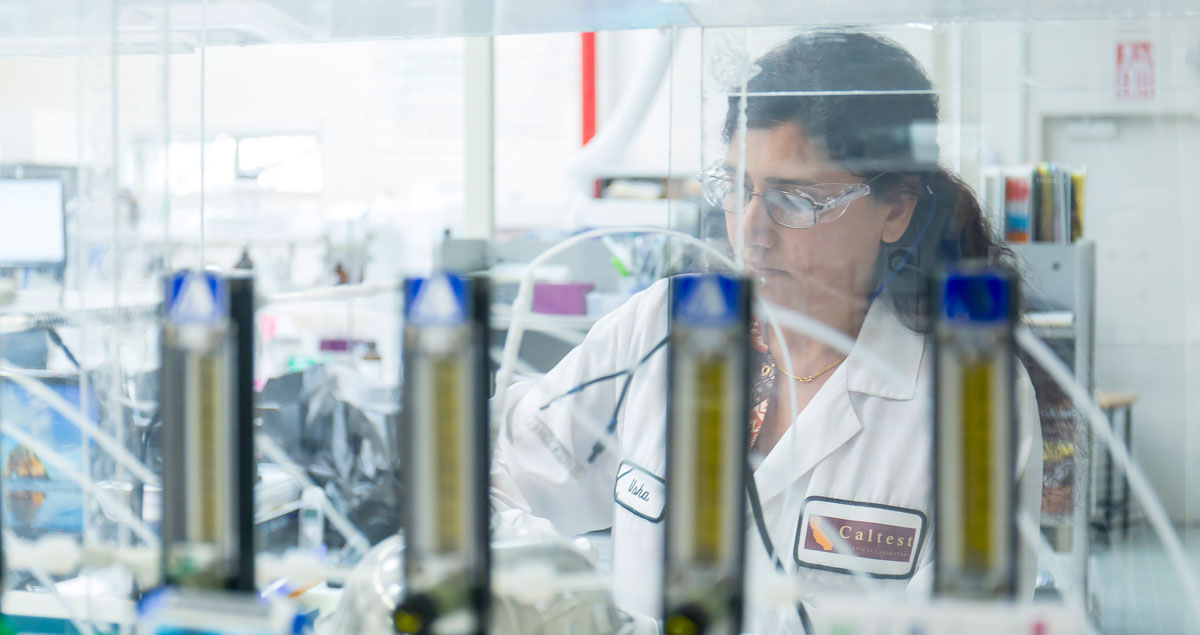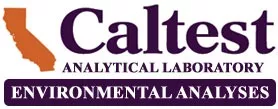Experience:
Caltest Laboratory has been under the same ownership since 1982 and is focused on trace level regulatory analyses of water/groundwater/and wastewater. Caltest has a strong core of long-term staff members averaging over seven years’ experience in the analytical lab. Each department has analysts with more than five years’ experience at Caltest, with a high degree of expertise in the analyses of wastewater and groundwater matrices.
We run most analyses in house. The analyses we routinely subcontract are those specialty analyses such as asbestos, dioxin, radiological, bioassay and tributyltin. We also subcontract some of the drinking water extractables and herbicide analyses. See our 2020 Schedule of Services for a comprehensive list of our services.
Caltest’s project experience ranges from military base groundwater analyses to the routine and special project analyses related to Stormwater, NPDES (National Pollutant Discharge Elimination System) and POTW Pretreatment Program work.
Much of the sample load at Caltest involves relatively clean matrices requiring lower reporting limits.
Our Client Experience:
Our clients represent government agencies, industries and consulting firms requiring analyses of wastewater, groundwater, and drinking water, as well as hazardous waste analyses of sludge and soils. Caltest’s reporting experience includes a variety of electronic deliverables customized to our client’s unique database needs.

Caltest History:
1974 – Caltest was established
1982 – Purchased by the current owner. Initial client base consisted of drinking water analysis, agriculture and wine analyses.
1986 – Caltest moved on to providing services for water monitoring specialists, wastewater treatment plants and their regulated industries.
1988 – Moved from Sonoma California to its current location in Napa California. Also:
- Started a pretreatment program for the City of Calistoga and expanded its client base to include numerous regulated industries.
- Invested heavily in state-of-the-art equipment for low-level metals, nutrients and automated BOD analysis.
The 1990s – Many other environmental labs went out of business. Caltest used this opportunity to acquire exceptional chemists who have stayed with our company over the years. The lab focused on quality and service, while many other labs relied heavily on deep discount pricing.
1999 – Caltest was the survivor and the leading Northern California laboratory for low-level environmental compliance analysis in the Bay Area and Sacramento corridor.
2000 – Caltest became the first commercial laboratory to provide cold vapor atomic fluorescence (CVAF) low-level mercury test analysis in the State of California.
2001 – Caltest invested heavily in clean sample handling techniques for the metals department to enable us to run the lowest commercial environmental metals analyses in the State. Our routine low-level metals production moved to ICP-MS in 2001.
2002 – Started work to meet the calibration criteria of the California Toxics Rule and the State Implementation Plan for very low-level Minimum Levels. Caltest was the first lab in the state to meet all of these criteria for each set of analytes on the SIP lists.
- One of the first labs in the State to introduce Perchlorate analysis commercially
- Purchased equipment specifically for this purpose enabling calibration down to one ppb, the lowest reporting limits available among commercial laboratories.
2003 – Expanded to include clients throughout the California Central Valley and all of the Greater San Francisco Bay area.
2004 – Introduced Pyrethroid Pesticide analyses by GCMS/SIM at the lowest levels commercially available. Developed in-house Methyl Mercury analysis.
2006-2008 – Developed and Introduced Pyrethroid Pesticide analyses by GCMS/NCI/SIM, eliminating matrix interferences which created positive bias detections using traditional GCMS/EI/SIM techniques. The GCMS/NCI/SIM method continues to be Caltest’s standard method for pyrethroids in surface water, wastewater, and sediment matrices.
2010-2014 – Purchased, developed, and introduced new triple quadrupole instrumentation (GC/MS/MS) for low level PAHs with Reporting Limits at 0.005 ug/L.
2013 – Developed analysis of fipronil, fipronil desulfinyl, fipronil sulfide, and fipronil sulfone in sediments and waters.
2014-2016 – Developed Pyrethroid Pesticide analyses by triple quad (GCMS/MS/NCI) at the lowest commercially available reporting limits in preparation for the Central Valley Regional Board’s new Pesticides TMDL requirements.
2019-2020 – Developed Pyrethroids Pesticides method by EPA 625.1 in response to the Central Valley RWQCB request to labs in response to the new Pyrethroids TMDL and Basin Plan Amendment from 2017.
2021-2022 – Developed method for analyzing Imidacloprid in water samples by EPA 632 (HPLC), in response to the Central Valley Water Board’s request for analytical methods that can achieve the desired Minimum Reporting Level (MRL) of 0.01 µg/L for imidacloprid in whole water (unfiltered) samples from surface waters and wastewater effluent.
